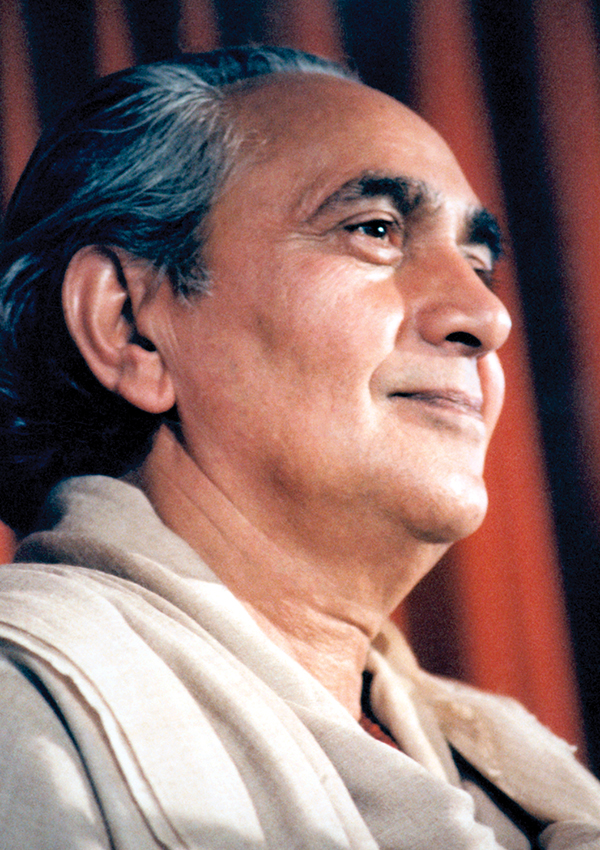Those who meditate seek to explore the interior life, the unknown inner levels of their being. Ultimately and most importantly, the goal of meditation is to become aware of the center of consciousness within, from where consciousness flows on various degrees and levels. In order to attain this goal, a meditator needs to pursue a systematic and methodical approach, which will enable him or her to achieve progressively deeper levels of inner experience.
In such a systematic approach, the meditator must begin on the physical level, quieting and balancing the functioning of the physical body. Next the meditator seeks to make the breath serene. And then the meditator begins the process of making the mind tranquil. Eventually, meditators seek to go beyond all the levels of the conscious and even the unconscious mind, so that they establish themselves in their essential nature.
This inward exploration is unlike all the other explorations and paths of the external world, on which we are taught to examine and learn about the world and the things around us. We have all been taught how to explore and study the objects of the external world by our parents and in schools, colleges, and universities, but the techniques we have learned will not help us to explore the inner world. To explore this inner world, we must use a precise and exact science, or we will merely waste our time and never attain our goal—the knowledge of the deepest level of consciousness within. Many people begin this journey, a few persist, but only those who have learned a precise and authentic practice of meditation can reach the ultimate goal.
In the ancient tradition of meditation, the science of mantra is the precise and technical process that meditators follow to attain their goal. Without the benefit of the mantra, it would not be possible for the serious student to make this inner pilgrimage successfully to the deepest level of his or her being. That is why mantra is described as being like either a raft or a bridge, which the meditator uses to cross over the river of life, eventually reaching the other shore, the state of highest consciousness. Without the help of this powerful technique, our meditative journey would be futile, because we would be unable to penetrate and fathom the levels of the mind and finally reach our goal.
To reach a genuine understanding of the practice of mantra yoga, it will be helpful to review what the process of meditation is, to explain how this path differs from other paths, and to define mantra and the role that it plays in helping the student establish a meditative state.
Meditation is an exact and precise technique for fathoming all the levels of ourselves, finally experiencing the center of consciousness within. The practice of meditation is not a part of any religion, but is a science, which means that this process follows a particular order, has definite principles, and produces verifiable results. Although the word “meditation” has come to be used loosely and inaccurately in the modern world, meditation (or dhyana) refers to a one-pointed state of internal focus of mind, which is effortlessly maintained for some time. Meditation is not daydreaming, fantasizing, or letting the mind wander and indulge itself or travel into its past grooves or habit patterns.
The goal of meditation is finally to experience a state beyond the mind’s levels of thinking, feeling, and analyzing. To do this, we must create a state that is still and one-pointed, so that the mind becomes silent. When the mind is silent and no longer distracts, then meditation deepens and finally one attains samadhi, the awareness of the highest state of consciousness. This is a distinct and different path than the paths of prayer and contemplation.
In prayer, a seeker establishes a dialogue with the divine force, and thereby purifies the way of the soul. In contemplation, the seeker uses the conscious mind to examine and consider some principle or concept—such as peace, truth, or happiness—and then allows his or her mind to assimilate this principle by considering how he or she can apply this principle to daily life. A serious student can use all three techniques, as there is no conflict between these paths—they are simply different processes.
. . . to be continued
Reprinted from Yoga International May/June 1992

